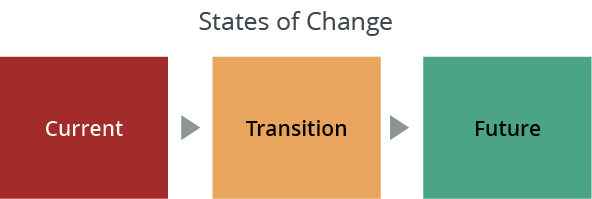FAQs About Coaching Employees Through Change

3 Mins
Updated: November 18, 2025
Published: July 1, 2015

Of all the change management activities, coaching can have the greatest impact on breaking down barriers and moving your organization successfully through the ADKAR Model. If you are new to coaching in change management, the answers to these frequently asked questions will help you build a foundational understanding.
What is the Purpose of Coaching
in Change Management?
Coaching is key part of your People Manager Plan, one of the recommended Core Plans in the Prosci Methodology.
People managers play five key roles during change:
- Communicator
- Liaison
- Advocate
- Resistance Manager
- Coach
Coaching is how you will support people managers during the change and how they will interact with the front-line employees in their department or area of the business. The objective is to fully enable these people managers to:
- sponsor the change with their teams
- prepare, equip and support people and teams during the change
- support people and teams in the new, changed environment (the future state)

Did you know the Prosci Methodology was completely refreshed in 2021?
Learn how you can achieve greater success on your organizational changes today!
Why Is Coaching So Important?
Coaching is a vital part of successful change management. Research respondents consistently identify employee and manager resistance as one of the top obstacles to success in Prosci's Best Practices in Change Management report. The influence that a people manager has on front-line employees is immeasurable.
Coaching during change management provides a venue for one-on-one and group meetings between employees and the people they trust the most, their immediate supervisor. This environment allows employees to ask questions and receive clarification about the change and to comment on their specific worries and concerns about change. It is also an opportunity to gather feedback from the front-line employees about the change and the change management efforts.
The Best Practices in Change Management report provides data showing that employees are most impacted by messages from the CEO and other senior leaders and their people manager. Effective coaching can alleviate many of the root causes of resistance and build support for the change throughout the organization.
Preparing people managers for their roles as coaches is built into the Prosci 3-Phase Process. Change practitioners address coaching in the Plan and Act stage of Phase 2 – Manage Change.
Prosci 3-Phase Process
.png?width=1285&height=912&name=3-phase-process-with-plain-language-questions%20(1).png)
What Are the Steps To
Developing a Coaching Plan?
1. Enable supervisors and managers to be effective change management coaches
Prepare a change management program and deliver this program to people managers. Several key areas should be addressed with people managers:
- Why is people manager involvement important in change management?
- How do I talk with employees about change?
- How do I coach my group through a change?
- How do I coach individual employees on my team through change?
- What are the expectations for coaching in this project (frequency, timelines, agendas, etc.)?
2. Develop group coaching activities and timeline
People managers should prepare for and meet with their groups to discuss the change. Key messages should be provided by the change management team.
Group coaching during a change is an effective medium for distributing information and gathering feedback. It can help to build support for change and ease concern and resistance. It is also an effective method for teaching employees about the ADKAR Model and how to use it as they go through change.
3. Develop individual coaching activities and timeline
Individual coaching sessions are one-on-one opportunities for people managers to work on change with specific employees. The face-to-face messages received are important as employees work through the change and try to perform in the changed environment.
The ADKAR Model provides people managers with a tool to effectively coach and manage individuals during change initiatives. The tool helps to determine:
- At what stage in the change process is each person?
- How can I help my team members through the change process?
The ADKAR Model can prevent you from focusing on the wrong things with employees at the wrong time. Each person will be in different stages of the ADKAR Model. Individual coaching is the process of assessing what stage of the ADKAR Model someone is experiencing and then developing actions to help them move through the change.
Coaching People Through Change
Every change management team is focused on increasing the impact of change management, yet practitioners often forget the importance of coaching in the overall change management plan. Coaching is a very effective way to create the Desire, Knowledge, Ability and Reinforcement necessary to help people move ahead on their ADKAR journeys—enabling them and your organization to achieve greater success from critical changes.




